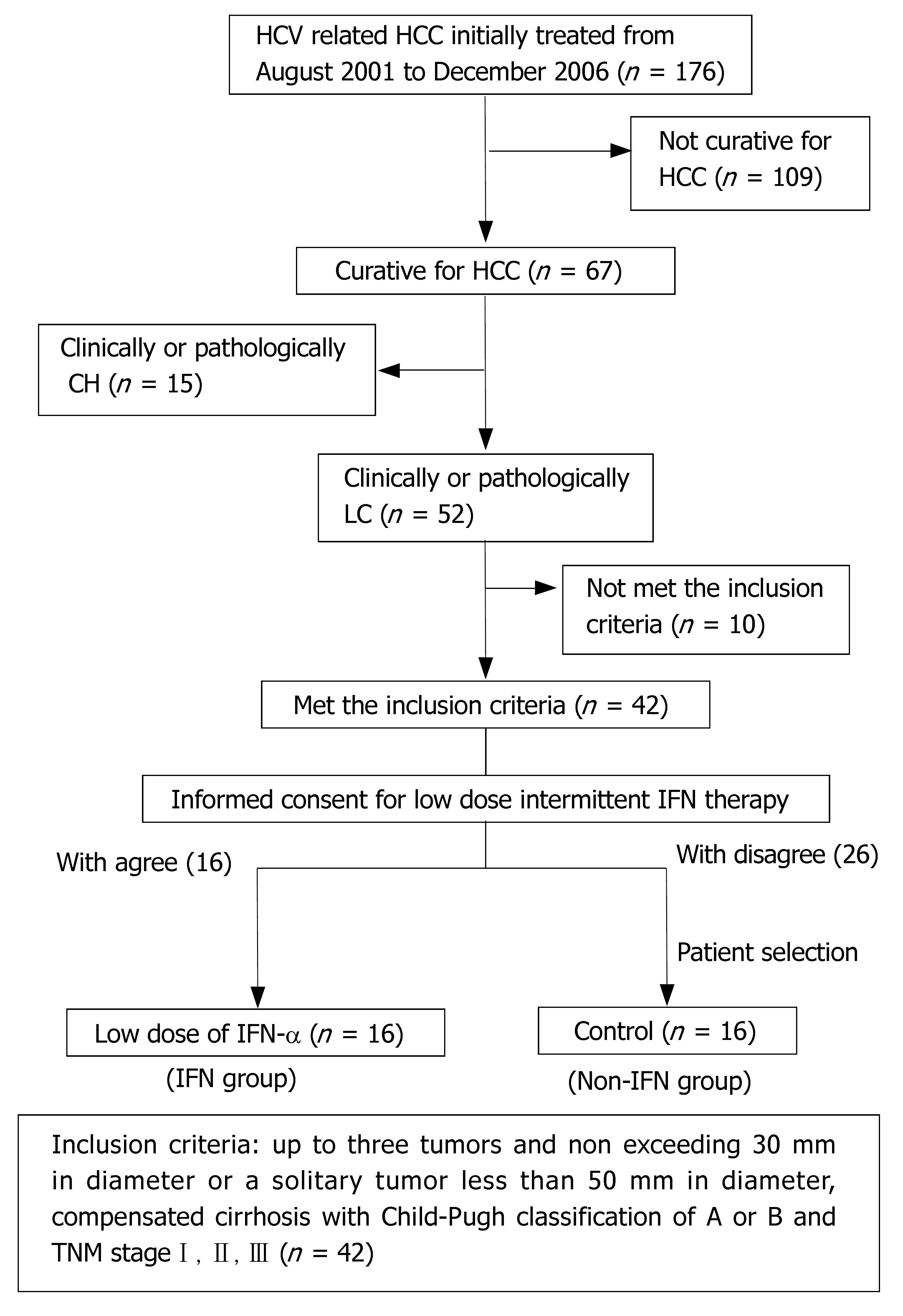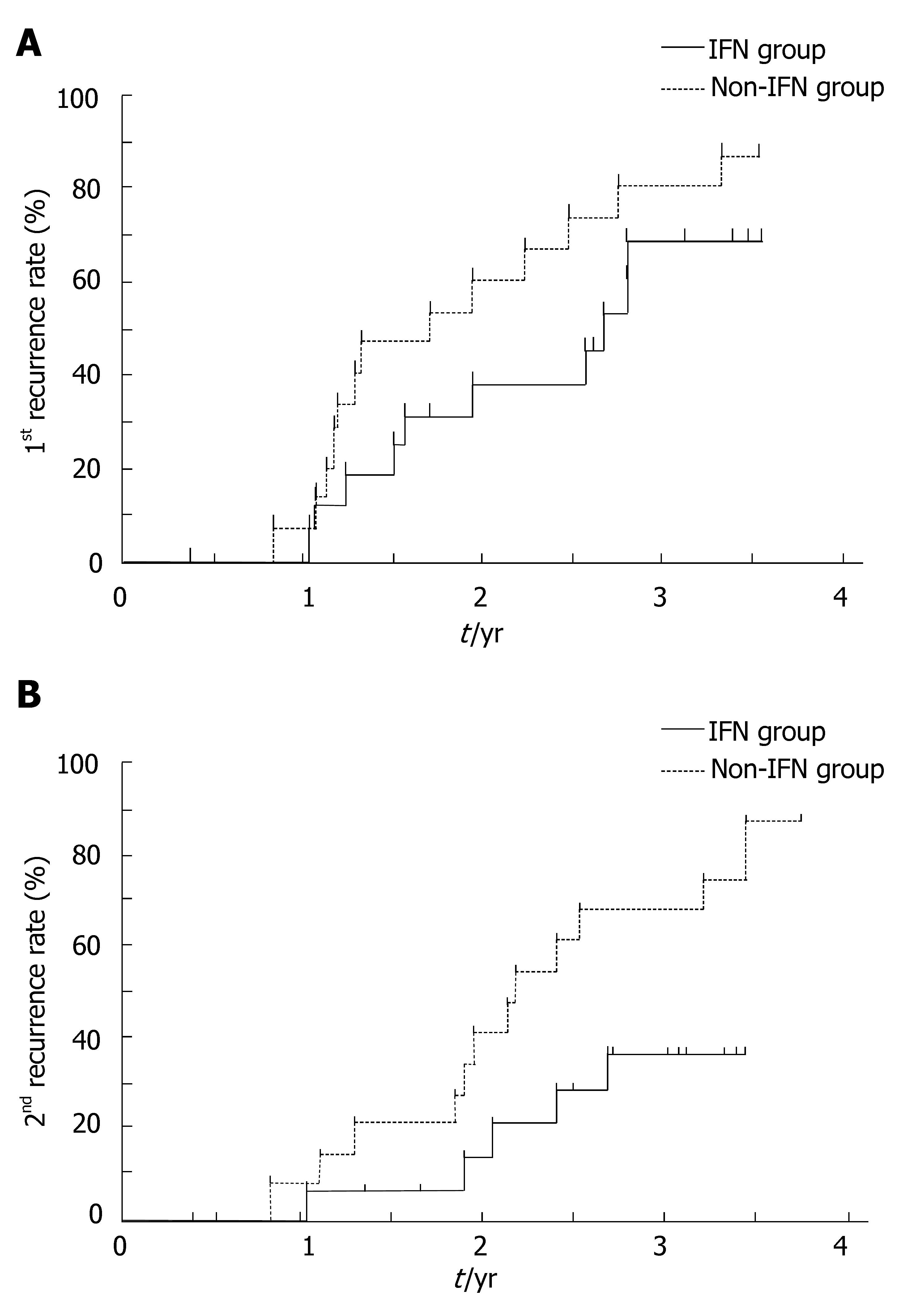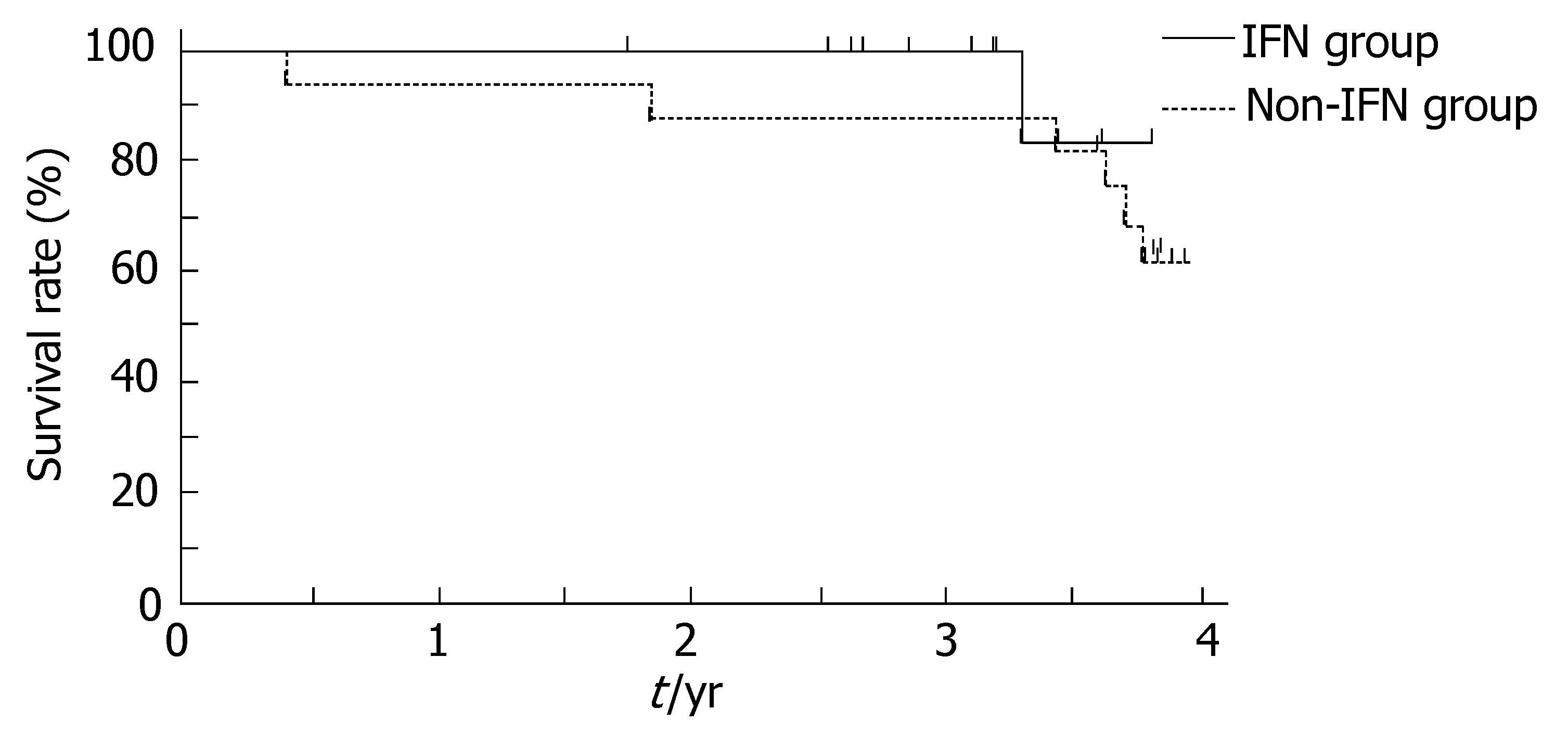Copyright
©2007 Baishideng Publishing Group Inc.
World J Gastroenterol. Oct 21, 2007; 13(39): 5188-5195
Published online Oct 21, 2007. doi: 10.3748/wjg.v13.i39.5188
Published online Oct 21, 2007. doi: 10.3748/wjg.v13.i39.5188
Figure 1 Schematic flow chart of enrolled patients.
Figure 2 A: Clinical course of the interferon group.
Patients who had a curative treatment for primary HCC received 3 MIU of natural interferon-alpha three times weekly for at least 48 wk as long as possible except Cases 12, 14 and 16. Recurrent HCCs were treated with or without curative treatment; B: Clinical course of the non-interferon group. Patients who had a curative treatment of primary HCC did not receive IFN therapy. Recurrent HCCs were also treated with or without curative treatment.
Figure 3 A: Cumulative rate of first recurrence.
Rates of first recurrence for the IFN and non-IFN groups. The rate of first recurrence of HCC in the IFN group was not significantly different from that of the non-IFN group (P = 0.157); B: Cumulative rate of second recurrence. Rates of second recurrence for the IFN and non-IFN group. The rate of second recurrence of HCC in the IFN group was not significantly different from that of the non-IFN group (P = 0.056).
Figure 4 Effect of IFN therapy after curative treatment of HCC on Child-Pugh scores.
IFN-treated patients were less likely to show deterioration of hepatic function. The average scores of Child-Pugh of the IFN group were significantly better preserved than the non-IFN group (P = 0.0008).
Figure 5 Cumulative rate of deviation from objects of any treatment of recurrent HCC.
Recurrent HCC tended to be treatable later in the IFN group than non-IFN group (P = 0.048).
Figure 6 Cumulative survival rate.
Comparison of the cumulative survival rates of the IFN and non-IFN groups. The cumulative survival rate was not significantly different between the two groups (P = 0.45).
- Citation: Jeong S, Aikata H, Katamura Y, Azakami T, Kawaoka T, Saneto H, Uka K, Mori N, Takaki S, Kodama H, Waki K, Imamura M, Shirakawa H, Kawakami Y, Takahashi S, Chayama K. Low-dose intermittent interferon-alpha therapy for HCV-related liver cirrhosis after curative treatment of hepatocellular carcinoma. World J Gastroenterol 2007; 13(39): 5188-5195
- URL: https://www.wjgnet.com/1007-9327/full/v13/i39/5188.htm
- DOI: https://dx.doi.org/10.3748/wjg.v13.i39.5188














